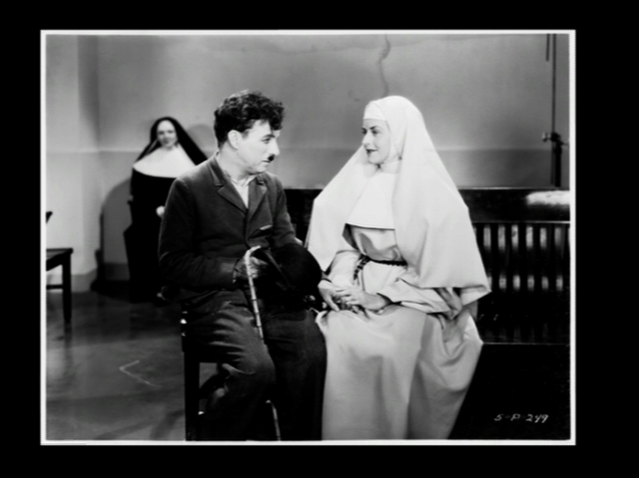Main Content
Lesson 2: The Development of Cinematic Language
Breaking the Tramp Mold

In other comedies, such as the Shakespeare comedies, the things getting in the way of the lovers coming together at the end have to be exited, stage left. But, what we have here is the Tramp has to leave society. Chaplin seems to say society cannot be redeemed. In all Chaplin’s films, save Gold Rush, the Tramp leaves the society that will not accept him, and heads out to the road. This is part of the serial logic of the Chaplin films. He tried to enter society, he gets beaten around, ridiculed, and eventually leaves by himself.
This was originally going to be the case with this film. The ending had Chaplin back in prison after this scene, and then when he got out, he would find the gamine again. This time, however, she was a nun. This was the first take on this. But, Chaplin is famously hostile to religion, and here he had religion cloistering her free spirit, and then she would leave the Tramp left to fend for himself.
Chaplin felt this was too pessimistic, given the current of the times, which was the Depression. This was to be a pretty negative view of the outcome of things, two free spirits who can't find compatibility. One of them has to leave society, and the other has to become a nun.
Instead of that ending, we get this ending.
Video 2.32: Ending of Modern Times.
This is the social message of the film. Things may be hard, but as the intertitle says, buck up, never say die, we'll get along. This was the original music that Chaplin composed. The song was called Smile. We have Chaplin walking off into the sunset with his love interest. This is a much more optimistic ending than Chaplin gave us in any of his other films, and in a sense, this is not only the exit of this character from this film, but the exit of the Tramp from the motion picture industry.
